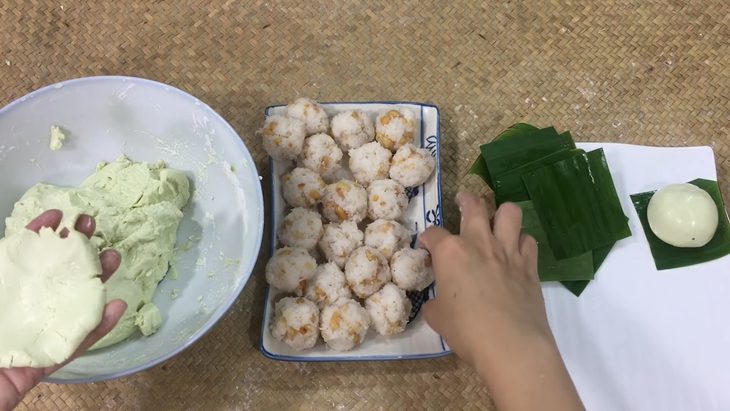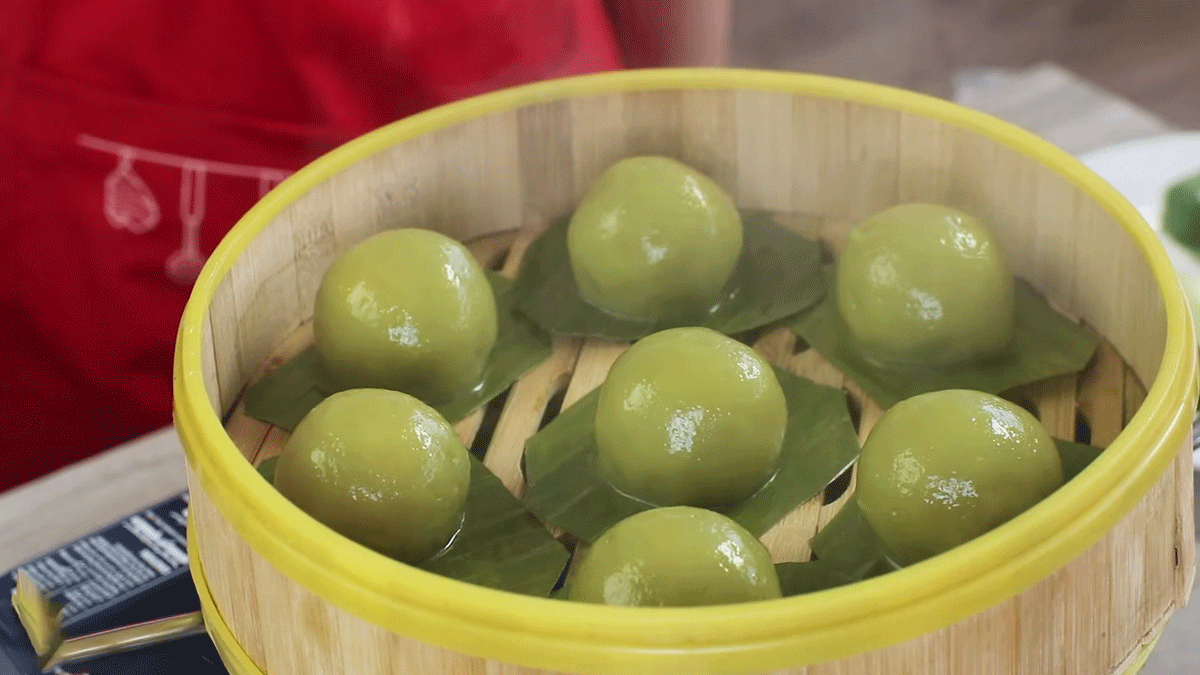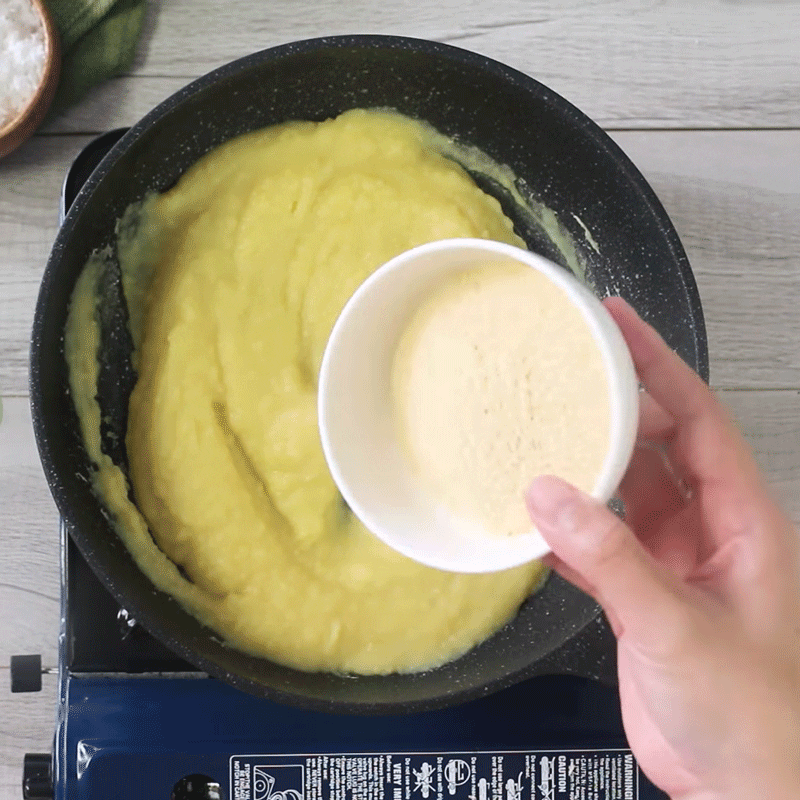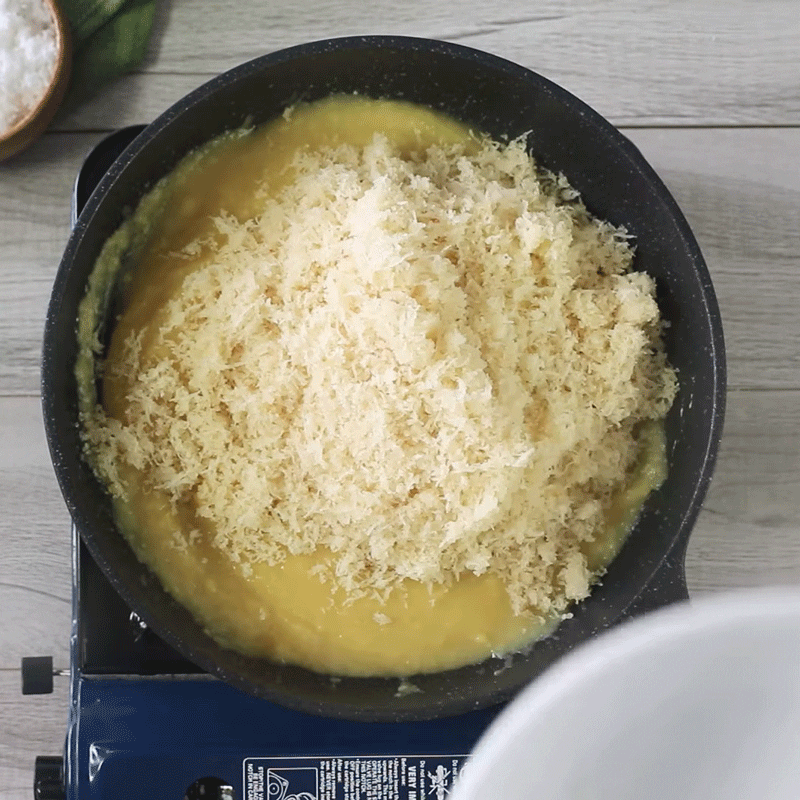Steamed pandanus cake is delicious and unique with a chewy cake skin, aromatic filling, and rich coconut flavor with peanuts that is really appealing. Save the following 2 easy recipes and let’s get cooking right away!
1. Steamed pandanus cake

-
Preparation time
2 hours
-
Difficulty level
Medium
Ingredients for Steamed pandanus cake Serves 4
Peanuts 20 gr Glutinous rice flour 250 gr Tapioca starch 50 gr Pandanus leaves 10 gr Sesame seeds 20 gr Grated coconut 200 gr Sugar 3 tablespoons Seasoning 10 gr (cooking oil/ salt…)
Note: You should not replace glutinous rice flour with tapioca starch because glutinous rice flour will make the cake chewy while tapioca starch has a stretchy property. You should mix these two types of flour together for a chewier and tastier steamed pandanus cake.

How to make Steamed pandanus cake
-
Blend the pandanus leaves
Clean the pandanus leaves, chop them into small pieces, then put them in a blender with 1/2 cup of water and blend until smooth, then strain to obtain the juice.

-
Coconut filling
Roast the peanuts over medium heat, stirring continuously. Then peel and crush them into small pieces.
Roast sesame seeds over low heat, stirring continuously.
Mix 60ml of water with 1 tablespoon of glutinous rice flour to combine the filling mixture, stirring well to dissolve.
Place a pan on the stove, turn on medium heat, add shredded coconut to the pan (do not add cooking oil), and add 3 tablespoons of white sugar, stirring until the coconut filling turns more translucent.
Add the mixed glutinous rice flour into the pan. Stir continuously until the mixture becomes chewy, then turn off the heat and add the peanuts.
Tip: Adding glutinous rice flour to the filling will make it chewy and easier to shape. Adding peanuts at the end will help keep them crunchy and rich.


-
Forming the filling
Shape the filling into evenly round balls, bite-sized.

-
Mixing and kneading the dough
Add 250g of glutinous rice flour, 50g of tapioca flour, 1/2 teaspoon of salt, 1 tablespoon of cooking oil, and 150ml of boiling water into a bowl. (Do not use warm water as it will cause the dough to become runny and spoil.)
Add pandan leaf extract until the desired green color is achieved.
While adding the pandan water, knead the dough evenly. Once the desired green color is achieved and the dough is still dry and not evenly mixed, gradually add warm water until the total amount of liquid added to the dough is about 280 – 290ml.
Knead the dough until it becomes smooth and elastic, then let it rest for about 10 – 15 minutes.
Tip: Do not add all the pandan water at once and do not add too much as it may make the cake bitter.


-
Shaping the cake
Wash the banana leaves, cut them into small square pieces to line the cake. Brush a little cooking oil on the banana leaves to prevent sticking.
Take a piece of dough that is one and a half times the size of the filling, roll it into a ball, then flatten it and place the filling in the center, wrapping the filling tightly inside, rolling it into a smooth and even ball. Place it on the banana leaf.

-
Steaming the cake
Place the shaped cake into the steaming basket.
Prepare a pot of boiling water, put the cake in and steam for about 5 – 10 minutes until the cake is cooked, the outer layer of the cake will be translucent as shown.
Take the cake out and sprinkle a little roasted sesame on top to complete the dish.

-
Final product
Bánh ít trần lá dứa is delicious and uniquely flavored with a chewy outer layer, and the fragrant, rich filling of coconut and peanuts is truly appealing. You can add a little coconut milk to make the dish even more perfect.

2. Bánh ít trần lá dứa with mung bean filling

-
Preparation
40 minutes
-
Cooking
15 minutes
-
Difficulty
Medium
Ingredients for Bánh ít trần lá dứa with mung bean filling Serves 4 people
Peeled mung beans 150 gr Grated coconut 200 gr Glutinous rice flour 400 gr Tapioca flour 50 gr Powdered sugar 30 gr Palm sugar 170 gr Coconut oil 15 ml Cooking oil 15 ml Pandan leaf juice 400 ml Salt 1 teaspoon
How to Make Sticky Rice Cake with Pandan Leaves and Mung Bean Filling
-
Sauté Coconut
Add 200g of grated coconut to a pan and place it on the stove over medium heat. Add 60g of jaggery sugar and sauté for 3 minutes until the sugar melts and combines with the grated coconut.


-
Cook Mung Beans
Cook 150g of peeled mung beans with 500ml of water and 1 teaspoon of salt for 20 – 25 minutes, until the mung beans are soft. Then use a ladle to stir until the mung beans dissolve.
Wait for the mung beans to cool, then use a blender to puree the mung beans.




Cook the mung bean and coconut filling
After the mung beans are finely ground, they are placed in a pan and put on the stove. Add 110g of palm sugar and 15ml of coconut oil, stir well.
Next, add the coconut that has been sautéed with sugar, and cook on low heat for 30 minutes until the filling becomes thick and sticky.
Let the filling cool, then divide it into small balls weighing about 20g each.




Mixing the dough
Mix 400g of glutinous rice flour with 50g of glutinous rice flour, 30g of powdered sugar, and 15ml of cooking oil.
Then gradually add 400ml of pandan leaf water, while starting to knead the dough so that it does not become too loose or dry. Continue kneading for about 10 minutes, until the dough is elastic and smooth.
Let the dough rest for 10 minutes to allow it to rise.



Shaping the cake
Divide the dough into small pieces, flatten them, then place the filling inside, sealing it well. Place the cakes on parchment paper or banana leaves so that when steaming, the cakes do not stick to the pot.
Repeat until all the dough and filling are used up.



Steaming Banh It
Place the cake in the steamer and steam for 15 minutes.

Final Product
The steamed Banh It is sweet and delicious, with the rich and nutty flavor of the mung bean and coconut filling and the beautiful green color of the outer layer, making it an extremely appealing dish for the whole family.

Tips for Successful Execution:
- The cakes should be stored in a airtight container, stored in the refrigerator can be used for 1 – 2 days.
- When steaming the cakes, you can wrap an additional layer of cloth over the lid of the steamer to prevent steam from dripping down, which causes the cakes to take longer to cook and results in a bumpy texture, making them less delicious.
See more:
Sticky rice cake with pandan leaves, peanut, coconut, and mung bean filling is delicious and really easy to make, right? Wish you all success!
*Refer to images and recipes from the YouTube channel Món Việt Channel and Cooky TV






